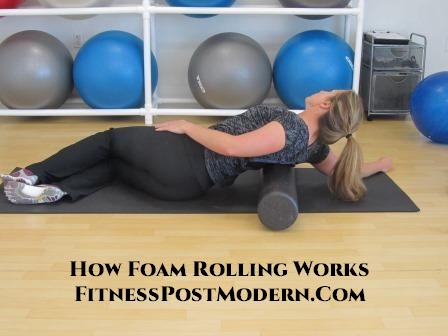Have you ever tried foam rolling? Or perhaps you’ve tried it, but want to know more about how it actually works? In this article, I’ll teach you the how’s and the why’s of this relatively new category of stretching techniques. Once you learn how foam rolling works, you’ll want to do it every day!  It’s definitely changed my life for the better and helped many of my clients get better results! Hopefully it can help you too! Good self-massage techniques can help you decrease your risk for injuries, balance your body, recover quicker, and improve your performance!
It’s definitely changed my life for the better and helped many of my clients get better results! Hopefully it can help you too! Good self-massage techniques can help you decrease your risk for injuries, balance your body, recover quicker, and improve your performance!
Myofascial System Malfunctions
One of the easiest ways to prevent common sports and exercise injuries is to incorporate regular self-massage into your overall workout programs. Fascia is a soft tissue that covers and connects our muscles and bones. Muscle and fascia coexist as the myofascial system. When you have prior or existing injuries, have poor flexibility, or do the same repetitive movement patterns over and over, you may begin to develop knots or adhesions, which basically mean your different layers of muscles and connective tissue are “sticking” together.
How Foam Rolling Works
When knots or adhesions build up, it shortens the overall length of the muscle. This makes you feel tighter and shortens your range of motion at your joints. Next, you may start developing compensations – or recruiting the wrong muscles to do a movement because the right muscles are not functioning properly. This downward spiraling pattern leaves you more vulnerable for injury. SMR, or self-massage helps you proactively find and release those knots or adhesions, aka trigger points. Just static stretching alone will not help release those trigger points. You must get in there and put some pressure on them to get them to release.
Foam rolling is one of many methods that fall under the stretching category, “self-myofascial release.” When used regularly, can help prevent and reduce the likelihood of common injuries because it will help break up knots, adhesions, and create healthier muscle alignment. It can also help to increase blood flow to muscle tissue, which allows for better delivery of oxygen and other nutrients. Check out the list below for the many great benefits of using a foam roll:
The Benefits of Foam Rolling
- Optimize Muscle Lengths
- Decrease Size and Occurrence of Knots
- Decrease Adhesions
- Faster Recovery
- Better Nutrient and Oxygen Delivery
- Better Removal of Post-Exercise Lactic Acid and Other Toxins
- Great For Relaxation, Self-Care
- FEELS AWESOME 🙂
How to Use a Foam Roller
Position your body on top of the foam roller on the area you want to work. Remember you control the pressure by how you position yourself and keep these tips in mind:
- Foam rolling should be done on warm muscles.
- In the warm-up, do it after your cardio warm-up but before dynamic stretching/lifting/sports.
- At the end of your workout, do it right before your static stretching.
- Roll over each area 10-20 times and try to relax the body part you’re rolling, taking deep breaths.
- Stay on soft tissue. Do not roll on bones or joints or spine.
- Expect a little discomfort. This pain will lessen the more regularly you foam roll though!
- If you find a trigger point, knot, or other tender area, try to stay on the spot. You may even feel it relax under you!


